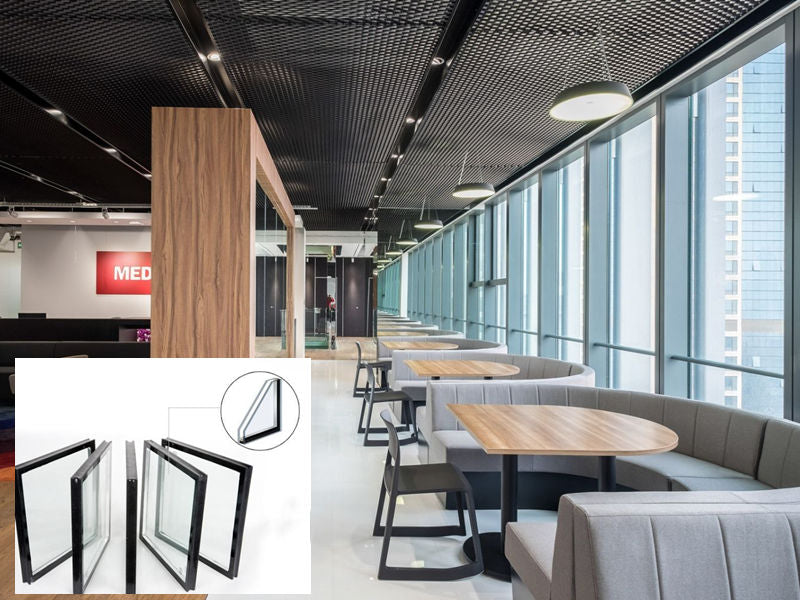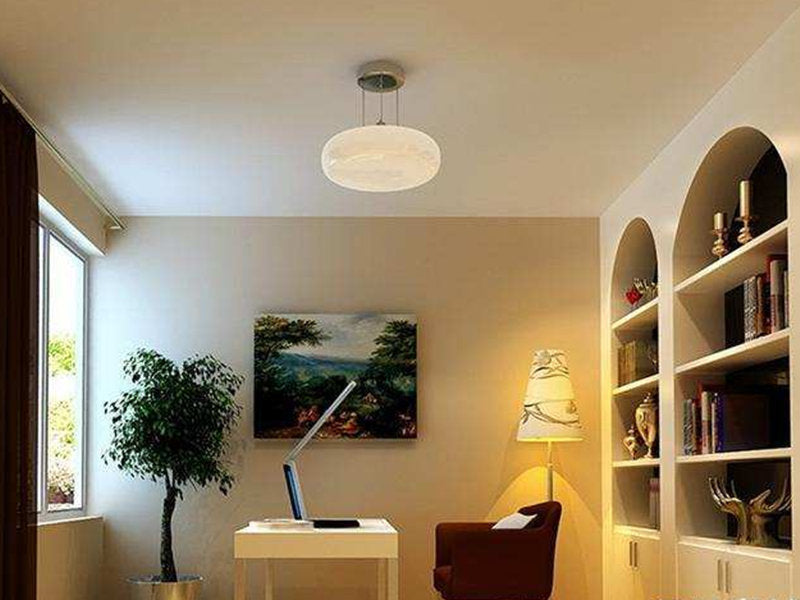
1. Selection of window glass material

The selection of the appropriate window glass material is crucial to both the natural lighting design of the building and the energy saving of the building's thermal insulation. There are various glass materials for making transparent glass windows: transparent glass, heat-absorbing glass, heat-reflecting glass, spectrum-selective glass, etc.
(1) Transparent glass. Transparent glass is one of the most commonly used materials, it is more economical and has high visible light transmittance, which can maximize the acquisition of light, but it also has many defects. Transparent glass has high thermal conductivity and shading coefficient, and poor thermal insulation and thermal insulation performance. Because building doors and windows are the weakest parts of the building envelope, their long-term energy consumption accounts for about 50% of the entire building. Therefore, it is extremely disadvantageous for energy saving. When the window glass is changed from a single layer to a double layer (insulating glass), the thermal insulation performance of the window will be significantly improved. The airtight air layer formed between the double glazing has good thermal insulation performance. Reasonable selection of the thickness of the air layer between the double-layer glass can obtain good thermal insulation performance and economy.
(2) Heat-absorbing glass. Heat-absorbing glass is a kind of glass that can transmit visible light, absorb heat (infrared) radiation, and prevent a certain amount of heat radiation from passing through. By adding oxides of certain elements to the glass and controlling the smelting conditions, glass with different hues such as blue-gray or brown can be obtained, so it is also called bulk-colored glass. The main characteristics of heat-absorbing glass are: absorb the radiant heat in the solar spectrum and reduce the cooling load of air conditioners; it absorbs visible light energy in the solar spectrum, and the transmittance of visible light is also significantly reduced, which can make the dazzling sunlight soft and comfortable, and play a good anti-glare effect; absorbs ultraviolet light energy in the solar spectrum, reducing the damage of ultraviolet rays to the human body and indoor items.
(3) Heat reflective glass. Heat reflective glass has high heat reflection ability, also known as coated glass, which can effectively prevent solar radiation. Heat reflective glass is divided into gray, bronze, brown, gold, light blue, brown, bronze and brown. In terms of performance and structure, there are heat reflection, anti-reflection, hollow heat reflection, laminated heat reflection glass, etc. But its light transmission performance is poor.
(4) Spectrum selective glass. Spectral selective glass is a kind of glass that selectively absorbs the solar spectrum. It has high visible light transmittance, low ultraviolet transmittance, and high solar radiation reflectivity, which can filter harmful rays in sunlight. Different types of spectrally selective glass have different light transmittance and heat reflection properties with different added materials. Therefore, a reasonable choice can be made according to the needs of lighting and heat insulation.
In general, all kinds of glass materials have their own characteristics. When choosing, we should take into account the requirements of building lighting and building thermal insulation and energy saving. When choosing, please refer to the following principles:
① Transparent glass: Use double-layer transparent glass as much as possible; in buildings with high lighting requirements and passive solar radiation heating requirements, using transparent glass is a better choice.
② Heat reflective glass: used in buildings that need to solve the glare problem caused by excessive brightness ratio; used in areas where it is necessary to avoid the increase of cooling load of air conditioners caused by solar radiation (such as hot areas);
In addition, it can be used for large-area skylights; it should be avoided in buildings with high lighting requirements.
③ Heat-absorbing glass and spectrum-selective glass: more flexible, can better balance lighting and heat gain control.
2. Integration of natural and artificial lighting

Even if a building is carefully designed to have sufficient natural light, it still needs to use electrical lighting systems in rainy weather and at night. In buildings with good natural light, when natural light is abundant, turning off the electrical lighting system can save a lot of energy and reduce the demand for electricity. When a light is needed, people turn it on without thinking, but rarely turn it off when it is no longer needed. This is because people are not disgusted with the excess brightness, and they seldom pay attention to it, and the eyes are easy to adapt to the higher illuminance.
Therefore, if natural lighting is to be used to save electricity, an automatic control system must be installed. The automatic control system consists of photocells installed on the ceiling above the work area and two types of control panels that control switches or gradually adjust. The switch control method is more economical, while the gradual adjustment method can save more energy and cause less disturbance to the user. In addition, in order to make full use of the advantages of these automatic control systems, it is also necessary to reasonably determine the location of the lamp installation according to the need to supplement the lack of illumination.
















